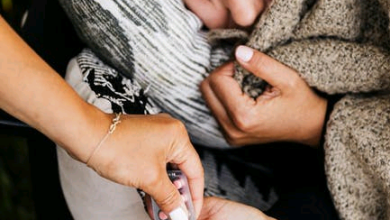Which Fruit Rots the Fastest?
When it comes to buying fresh fruit, we’ve all experienced the disappointment of finding our favorite berries or bananas turning mushy and inedible seemingly overnight. To help you make the most of your fruit purchases, I conducted an experiment to determine which fruits spoil the fastest and which ones have a longer shelf life. In this blog post, I’ll share my findings and provide tips on how to extend the freshness of your fruits.
Which Fruit Rots the Fastest?
In my experiment, blackberries took the lead in spoiling the fastest, developing white mold within just three days of purchase. Blueberries and strawberries followed closely behind, showing signs of shriveling and dark spots within two days. The proximity of the fruits to each other during the experiment may have accelerated the ripening process.
The Longevity Champions:
On the flip side, honeydew and watermelon emerged as the champions of longevity, lasting an impressive 28 and 35 days respectively after purchase at their peak ripeness. These fruits demonstrated minimal signs of spoilage, with only minor marks on the skin.
Detailed Fruit Longevity Chart:
For a quick reference, here’s a chart showcasing how long each fruit lasted at room temperature, along with the first signs of spoilage:
| Type of Fruit | Days Until Rotting Starts | Signs of Spoilage |
|---|---|---|
| Blackberries | 2 Days | White fuzzy mold |
| Banana | 2 Days | Brown spots, bruises |
| Blueberries | 3 Days | White mold, shriveled |
| Orange | 3 Days | Black mold specs on the peel |
| … (and so on) |
How to Tell When Fruit Has Gone Bad:
As a general rule, mold in white, green, brown, or black colors indicates that the fruit has gone bad. Bruises, discoloration, blemishes, cuts, or marks on the outside are also signs of spoilage. If the fruit feels mushy, grainy, or has an unpleasant odor, it’s time to discard it.
Which Fruit Grows Mold the Fastest?
Blackberries took the lead in growing mold the fastest among commonly purchased fruits. White fuzzy mold appeared within just three days of purchase, rendering them inedible.
Tips to Prevent Berries from Rotting:
To extend the freshness of berries, wash them in a water and vinegar solution immediately after purchase. Soaking them for at least 5 minutes, rinsing, and air-drying on paper towels can help. Remove any spoiled berries promptly to prevent them from affecting others.
Preventing Browning:
Bananas were found to ripen faster than apples due to oxidation. To slow down the process, keep bananas away from other ripe fruits, store them in the fridge, or place them next to unripe fruits like avocados. Coating peeled bananas with lemon juice can also protect them from browning.
Preventing Apple Browning:
Water, lemon juice, or lime juice can help prevent apple browning. Submerging cut-up apples in water or coating them with citrus juice before refrigerating can extend their freshness for up to three days.
Conclusion:
By understanding the shelf life of different fruits and implementing simple storage tricks, you can enjoy fresh and flavorful produce for longer periods. Whether it’s keeping berries mold-free or preventing apples and bananas from browning, these tips will help you make the most of your fruit purchases.
